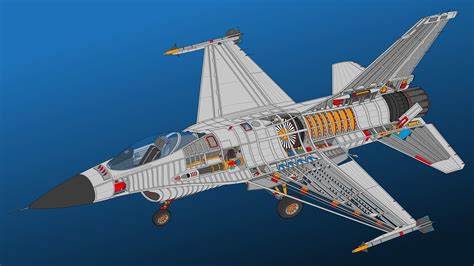Top 20 Aeronautical Engineer Fresher Interview Questions
Table of Contents
Top 20 Aeronautical Engineer Fresher Interview Questions
Can you explain what aeronautical engineering is?
Example – “Aeronautical engineering is the branch of engineering that deals with the design, development, testing, and production of aircraft and spacecraft. It involves applying principles of physics and mathematics to solve complex problems related to flight and aerospace technology.”
Why did you decide to work in aeronautical engineering?
Example – “I’ve always been fascinated by flight and the idea of pushing the boundaries of what’s possible in the sky. Aeronautical engineering allows me to combine my passion for aviation with my strong analytical and problem-solving skills.”
What do you know about different types of aircraft?
Example -“Aircraft can be broadly categorized into three main types: fixed-wing, rotary-wing, and spacecraft. Fixed-wing aircraft include airplanes and gliders, while rotary-wing aircraft include helicopters. Spacecraft encompass everything designed for space travel, such as satellites, space shuttles, and space probes.”
Explain the basic principles of flight?
Example – “Flight is governed by four fundamental principles: lift, weight (gravity), thrust, and drag. Lift is generated by the wings and opposes gravity, while thrust is provided by engines to overcome drag, allowing an aircraft to become airborne.”
What is the significance of the Mach number in aeronautics?
Example – “The Mach number represents the ratio of an object’s speed to the speed of sound in the surrounding medium. It’s crucial in aeronautics because it helps define an aircraft’s performance and characteristics, especially in terms of compressibility effects and aerodynamic behavior at high speeds.”
Explain the difference between a jet engine and a rocket engine?
Example – “Jet engines are air-breathing engines that require oxygen from the atmosphere to burn fuel. Rocket engines, on the other hand, carry their own oxidizers and can operate in the vacuum of space. Jet engines are used in airplanes, while rocket engines are primarily used in spacecraft.”
What are the key challenges in designing an aircraft?
Example – “Aircraft design involves addressing various challenges, including aerodynamics, structural integrity, propulsion, fuel efficiency, and safety. Balancing these factors is essential to create a successful aircraft.”
How do you calculate the efficiency of an aircraft engine?
Example – “The efficiency of an aircraft engine is determined by its specific fuel consumption (SFC), which is the amount of fuel required to produce a unit of thrust. A lower SFC indicates a more efficient engine.”
Explain the concept of the center of gravity in an aircraft?
Example – “The center of gravity (CG) is the point at which an aircraft’s weight is concentrated. It is a critical parameter for stability and control. Maintaining the CG within specified limits is essential to ensure the aircraft’s safe and stable flight.”
What is the role of control surfaces in aircraft?
Example – “Control surfaces, such as ailerons, elevators, and rudders, are used to control an aircraft’s movement in the air. Rudders control yaw while ailerons regulate roll and elevators control pitch.”
How does an autopilot system work, and why is it important in aviation?
Example – “An autopilot system is designed to control an aircraft’s flight path without constant manual input from the pilot. It uses sensors and computer algorithms to maintain altitude, heading, and other parameters. Autopilots enhance safety, reduce pilot workload, and improve fuel efficiency.”
What are the primary materials used in aircraft construction?
Example – “Aircraft are typically constructed using materials like aluminum, titanium, composite materials (such as carbon-fiber reinforced composites), and steel. The choice of materials depends on factors like weight, strength, and durability requirements.”
Explain the concept of laminar flow and its importance in aircraft design?
Example – “Laminar flow refers to the smooth and orderly flow of air over an aircraft’s wings or surfaces. It reduces drag and improves fuel efficiency. Aircraft designers strive to maintain laminar flow over critical areas to optimize performance.”
What is the role of wind tunnel testing in aircraft design?
Example – “Wind tunnel testing involves subjecting scale models of aircraft to controlled airflow to simulate real-world conditions. It helps engineers gather data on aerodynamics, stability, and performance, allowing for design refinements and improvements.”
Discuss the importance of safety regulations in aeronautical engineering?
Example – “Safety regulations ensure that aircraft are designed, manufactured, and operated in a way that minimizes risks to passengers and the public. Compliance with these regulations is crucial to maintaining the highest safety standards in aviation.”
How does aircraft maintenance contribute to safety in aviation?
Example – “Regular aircraft maintenance and inspections are essential to ensure that aircraft are in optimal working condition. Before they become safety threats, prospective problems can be found and fixed with the use of preventive maintenance.”
What is the role of a flight test engineer, and what skills are required for this role?
Example – “A flight test engineer is responsible for planning, conducting, and analyzing flight tests to assess an aircraft’s performance and safety. Skills needed for this role include data analysis, problem-solving, and a deep understanding of aircraft systems.”
Can you discuss the concept of supersonic and hypersonic flight?
Example – “Supersonic flight refers to speeds exceeding the speed of sound, while hypersonic flight involves speeds significantly greater than the speed of sound. Achieving and controlling these speeds pose unique challenges in aerospace engineering.”
How do you stay updated with the latest advancements in aeronautical engineering?
Example – “I stay updated by reading industry publications, research papers, and attending conferences and seminars. Additionally, I believe in continuous learning and am open to taking relevant courses and certifications.”
Why should we hire you for this aeronautical engineering position?
Example – “You should hire me because I am passionate about aeronautical engineering and have a strong academic foundation in the field. I am a quick learner, a team player, and have a deep commitment to safety and excellence in aerospace engineering.”




